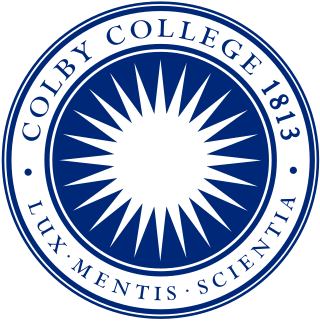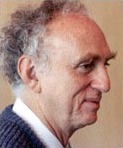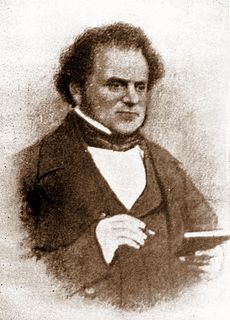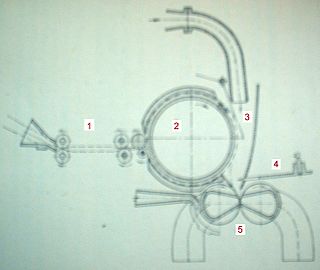
Rayon is a semi-synthetic fiber, made from natural sources of regenerated cellulose, such as wood and related agricultural products. It has the same molecular structure as cellulose. It is also called viscose. Many types and grades of viscose fibers and films exist. Some imitate the feel and texture of natural fibers such as silk, wool, cotton, and linen. The types that resemble silk are often called artificial silk.

Colby College is a private liberal arts college in Waterville, Maine. It was founded in 1813 as the Maine Literary and Theological Institution, then renamed Waterville College after the city where it resides. The donations of Christian philanthropist Gardner Colby saw the institution renamed again to Colby University before settling on its current title, reflecting its liberal arts college curriculum. Approximately 2,000 students from more than 60 countries are enrolled annually. The college offers 54 major fields of study and 30 minors.

Leo Hendrik Baekeland was a Belgian chemist. He is best known for the inventions of Velox photographic paper in 1893, and Bakelite in 1907. He has been called "The Father of the Plastics Industry" for his invention of Bakelite, an inexpensive, non-flammable and versatile plastic, which marked the beginning of the modern plastics industry.

Linus Yale Jr. was an American mechanical engineer, manufacturer, and co-founder with Henry R. Towne of the Yale Lock Manufacturing Company, which became the premier manufacturer of locks in the United States. He is best known for his inventions of locks, especially the cylinder lock. His basic lock design is still widely distributed today, and constitutes a majority of personal locks and safes.

JT Group Limited is the parent company of several subsidiaries including Jersey Telecom Limited and Wave Telecom Limited. Jersey Telecom is the former monopoly operator in the Bailiwick of Jersey. JT provides telecommunications, Internet access and other services, mostly within the Channel Islands.

Martin Lewis Perl was an American chemical engineer and physicist who won the Nobel Prize in Physics in 1995 for his discovery of the tau lepton.

The Blickensderfer Typewriter was invented by George Canfield Blickensderfer (1850–1917) and patented on August 4, 1891. Blickensderfer was the nephew of John Celivergos Zachos the inventor of the stenotype. Two models were initially unveiled to the public at the 1893 World's Columbian Exposition in Chicago, the Model 1 and the Model 5. His machines were originally intended to compete with larger Remington, Hammond and Yost typewriters, and were the first truly portable, full-keyboard typewriters. The design also enabled the typist to see the typed work at a time when most typewriters were under strike machines that concealed the writing. When Blickensderfer unveiled his small Model 5 at the 1893 World's Fair, and a stripped-down version of his larger more complex Model 1 machine, these revolutionary features attracted huge crowds and many orders.

The Aston Martin DBS is a high-performance grand tourer based on the DB9 and manufactured by the British luxury automobile manufacturer Aston Martin.

The Braddock Road was a military road built in 1755 in what was then British America and is now the United States. It was the first improved road to cross the barrier of the successive ridgelines of the Appalachian Mountains. It was constructed by troops of Virginia militia and British regulars commanded by General Edward Braddock of the Coldstream Guards, part of an expedition to conquer the Ohio Country from the French at the beginning of the French and Indian War, the North American portion of the Seven Years' War. George Washington was an aide-de-camp to General Braddock who accompanied the expedition. The expedition gave him his first field military experience along with other American military officers. A number of these men would profit from this experience during the Revolutionary War.
EEStor is a company based in Cedar Park, Texas, United States that claims to have developed a solid state polymer capacitor for electricity storage. The company claims the device stores more energy than lithium-ion batteries at a lower cost than lead-acid batteries used in gasoline-powered cars. Such a device would revolutionize the electric car industry. Many experts believe these claims are not realistic and EEStor has yet to publicly demonstrate these claims. The corporate slogan is "Energy Everywhere".

Schuyler Skaats Wheeler was an American electrical engineer and manufacturer who invented the electric fan, an electric elevator design, and the electric fire engine. He is associated with the early development of the electric motor industry, especially to do with training the blind in this industry for gainful employment. He helped develop and implement a code of ethics for electrical engineers and was associated with the electrical field in one way or another for over thirty years.
Explosive forming is a metalworking technique in which an explosive charge is used instead of a punch or press. It can be used on materials for which a press setup would be prohibitively large or require an unreasonably high pressure, and is generally much cheaper than building a large enough and sufficiently high-pressure press; on the other hand, it is unavoidably an individual job production process, producing one product at a time and with a long setup time. There are various approaches; one is to place metal plate over a die, with the intervening space evacuated by a vacuum pump, place the whole assembly underwater, and detonate a charge at an appropriate distance from the plate. For complicated shapes, a segmented die can be used to produce in a single operation a shape that would require many manufacturing steps, or to be manufactured in parts and welded together with an accompanying loss of strength at the welds. There is often some degree of work hardening from the explosive-forming process, particularly in mild steel.

A speed nut, aka sheet metal nut or Tinnerman nut, is a type of locknut with two sheet metal prongs that act as one thread. They are made from spring steel.

George Baxter (1804–1867) was an English artist and printer based in London. He is credited with the invention of commercially viable colour printing.
Carlo D'Este was an American military historian and biographer, author of several books, especially on World War II. He was a decorated U.S. Army lieutenant colonel. In 2011, he was awarded the Pritzker Literature Award for Lifetime Achievement in Military Writing.
Leonard E. Davis is a former United States District Judge of the United States District Court for the Eastern District of Texas.

Friction Spinning or Dref Spinning is a textile technology that suitable for spinning coarse counts of yarns and technical core-wrapped yarns. Dref yarns are bulky, with low tensile strength making them suitable for blankets and mop yarns, they can be spun from asbestos, carbon fibres and makes filters was water systems. Yarns such as Rayon and Kevlar can be spun using this method. The technology was developed around 1975 by Dr. Ernst Fehrer.
Magnetic ring spinning, magnetic spinning, or innovative spinning is a ring spinning technology for making yarn based on magnetic levitation. This technique functions without a traveler sliding over the ring, enabling much higher spinning rates.
Mark A. Lemley is currently the William H. Neukom Professor of Law at Stanford Law School and the Director of the Stanford Law School Program in Law, Science & Technology, as well as a founding partner of the law firm of Durie Tangri LLP, which he has been practicing with since 2009.

The Aston Martin Vulcan is a two-door, two-seat, high-performance lightweight track-only car launched in 2015 by British luxury automobile manufacturer Aston Martin at the 2015 Geneva Motor Show.













